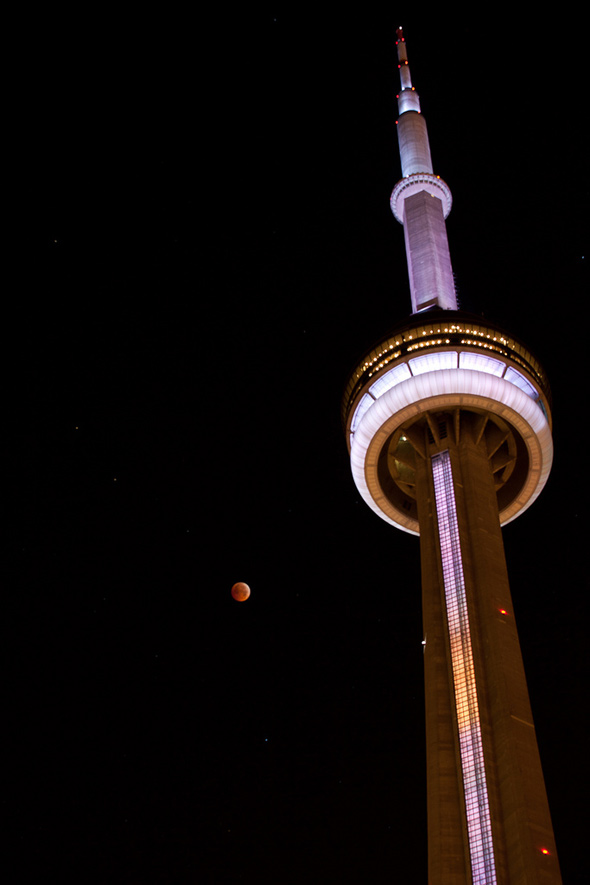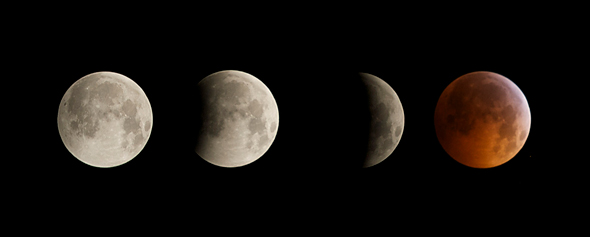Today I'd like to talk about this morning's solstice lunar eclipse. At least, I assume it was this morning since it was completely overcast in the Townships last night. I spent the whole day on the bus yesterday traveling from Toronto to the Townships to visit my parents for the holidays. The idea was that I would get back in time to watch the eclipse with my Dad, but alas, it was not to be. Ironically, it was perfectly clear in Toronto. Here's what it looked like there (stolen from blogTO):
Last night's eclipse took place between 1:33am and about 5am, with totality (that is, when the moon was completely covered by the Earth's shadow) starting at 2:41am and lasting 72 minutes. Though lunar eclipses are fairly common (I have been able to observe at least two of them in my short lifetime), this one was special because it occurred on the winter solstice, the shortest day of the year, something which last happened in 1638 and won't happen again until 2094. Fortunately, eclipses look the about the same no matter what the time of year, and the next one is on June 15th, 2011... Now if I can get my supervisor to send me to Australia, that'd be perfect.
As you may or may not know, a lunar eclipse happens when the Moon's orbit passes through the Earth's shadow, that is, when the Earth blocks the Sun's light from the Moon's point of view. This means that it's always a Full Moon when a lunar eclipse occurs (just like it's always a New Moon when a solar eclipse occurs). I always find a diagram is helpful (shamelessly stolen from Wikipedia):

Why then, you may ask, would we not have a lunar eclipse every time we have a Full Moon? This is because the Moon's orbit around the Earth is inclined by 5 degrees with respect to the Earth's orbit around the Sun, which means that the Moon's orbit only intersects the Earth's orbit in two locations. Only when we get a full Moon in one of these intersecting locations do we experience a lunar eclipse. This is probably also best illustrated by a diagram (from Starts With A Bang!):

As the moon travels through Earth's shadow, it looks like a progressively larger bite is being taken out of it, until the moon completely enters the umbra and turns this gorgeous shade of red. And why does the moon turn red instead of just going black? Well, folks, it's the same principle behind the question of why the sky is blue and why sunsets are red. As the sun's light passes through the Earth's atmosphere, the blue part of the spectrum is scattered, while the red part remains unaffected. Thus, the redder parts of the sun's spectrum are refracted by the Earth's atmosphere and the moon looks red. Because of this, the redness of the moon during an eclipse can depend on the atmospheric conditions on Earth, ranging from a bright orange to almost black.
The last lunar eclipse I saw was in February, 2008. It was a perfectly clear and freezing night, and the Bishop's Observatory was open to the public. My toes were completely numb by the time totality was finished, but it was still an incredible experience. If you want to know more about the mechanics of lunar eclipses, there's a really neat animated explanation here.


No comments:
Post a Comment